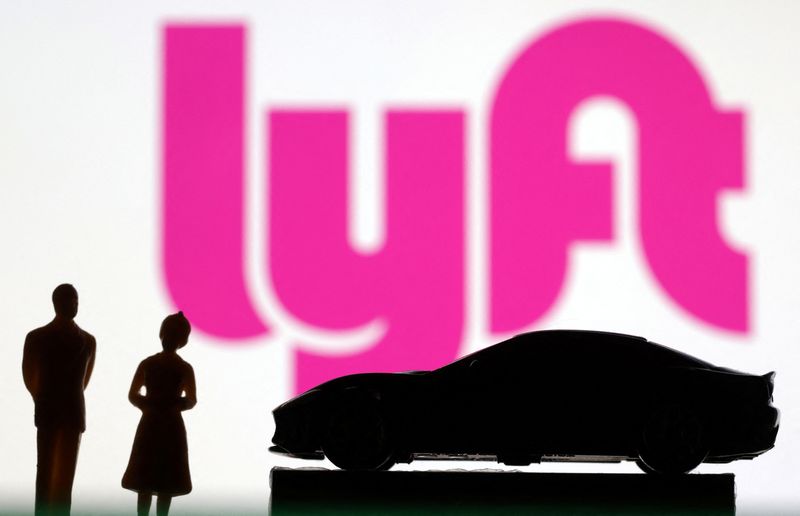By Nivedita Balu
(Reuters) – Lyft Inc on Thursday forecast current-quarter profit far below Wall Street targets as the ride-hailing service lowered prices, triggering a 30% drop in shares on concerns it was falling behind bigger rival Uber.
Lyft also forecast revenue below analyst expectations for the current quarter.
Investors are watching how the two companies rebound from the global pandemic and whether they can grow profits, which is often seen as a matter of pricing power.
President John Zimmer said in an interview with Reuters that the company planned “lower prices” and fewer hours of peak pricing, which he called “less prime time.” Lyft had room to lower prices because the market was strong, he added.
“Given the healthy marketplace, which hasn’t been the case coming off of the pandemic, it’s important for us to take advantage of that opportunity,” he said.
The plunge in Lyft’s share price translated into a nearly $2 billion loss in market cap; its shares were the most traded on the Nasdaq in after-hours trade. Uber shares were down 2.5%, a day after Uber reported a surprise fourth-quarter profit and forecast a current-quarter profit well above the average analyst estimate.
“They are clearly struggling here” compared to Uber, said Tejas Dessai, an analyst at Global X ETFs. “They need to evaluate their operations.”
Lyft forecast first-quarter revenue of about $975 million, below analyst estimates of $1.09 billion, according to Refinitiv data.
Lyft forecast first-quarter adjusted earnings before interest, taxes, depreciation and amortization (EBITDA), a key measure of profitability that strips out some costs, of between $5 million and $15 million. The average analyst target was $81.1 million.
Chief Financial Officer Elaine Paul blamed the forecast on seasonality and lower prices, including fewer Prime Time hours. Changes in insurance renewal timing also pressured profits.
“The guidance was a disaster and Lyft continues to be the little brother of Uber,” Wedbush analyst Dan Ives said.
Lyft’s bigger presence on the U.S. West Coast, a region that analysts have said is trailing the rest of the United States in its return to pre-COVID demand and where rideshare drivers are in short supply, could be hurting its recovery compared with Uber.
Zimmer said the West Coast had “not fully” recovered, but he noted a “material improvement.”
For the fourth quarter, Lyft reported adjusted EBITDA of $126.7 million, excluding $375 million it had set aside for increasing insurance reserves. Analysts had forecast $91.01 million.
“We wanted to ensure we strengthened our insurance reserve. … The purpose of doing that is to ensure we don’t have that type of volatility going forward,” Zimmer said in an interview.
Active riders rose 8.7% to 20.36 million for the fourth quarter, Lyft said, above the FactSet estimate of 20.30 million.
(Reporting by Nivedita Balu in Bengaluru; Editing by Anil D’Silva and Leslie Adler)
